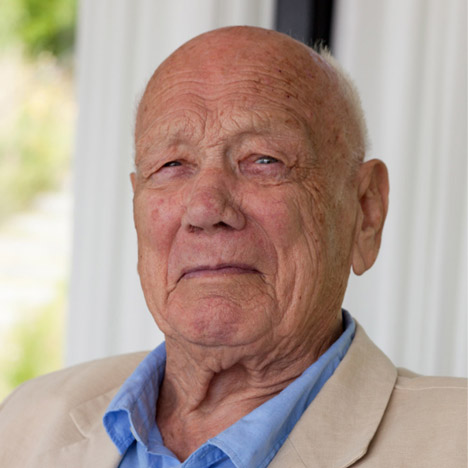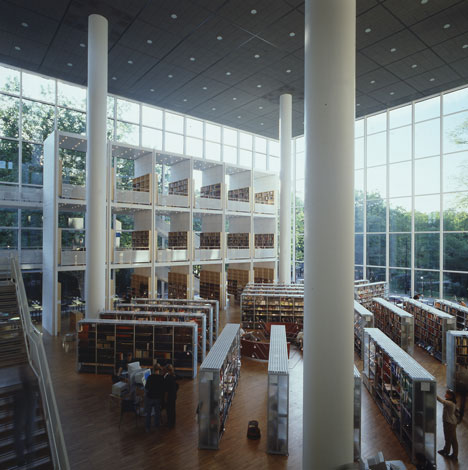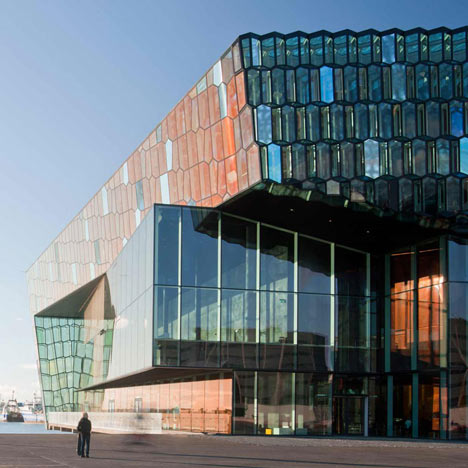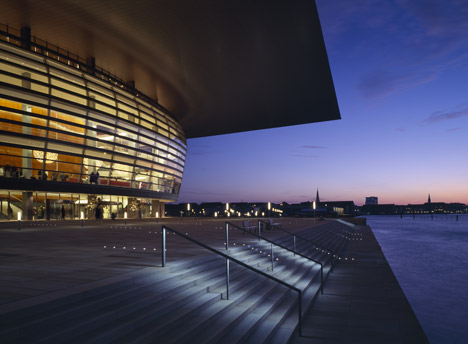
Henning Larsen 1925-2013
News: Danish architect Henning Larsen has died in Copenhagen at the age of 87.
Henning Larsen founded his practice in 1959, becoming one of Denmark's most prolific modern architects. Celebrated buildings in his home country include the Copenhagen Business School Dalgas Have and the Royal Danish Opera, while abroad he is best-known for designing the Ministry of Foreign Affairs building in Riyadh, Saudi Arabia, and the Malmö City Library in Sweden.

His most recent projects include the Harpa Concert Hall and Conference Centre in Reykjavik, Iceland, which won this year's European Union Prize for Contemporary Architecture, the Mies van der Rohe Award.
Larsen was praised by critics for the quality of light and shadow in his buildings and in 2012 he became the first Danish recipient of the Praemium Imperiale arts prize.

Although he was no longer directly involved with projects at Henning Larsen Architects, he closely followed the development of new designs and would often discuss details with his staff.
From 1968 to 1995 Larsen was a professor of architecture at the Royal Danish Academy of Fine Arts in Copenhagen, where he himself had trained as an architect.

He died at home in his sleep on 22 June.
See all our stories about Henning Larsen »
Here's a statement from Henning Larsen Architects:
It is with great sorrow that we have learned of the death of Henning Larsen. Architect Henning Larsen died in his sleep in his home in Copenhagen Saturday 22 June 2013. Henning Larsen was 87 years old.
In 1959, Henning Larsen founded his own architecture studio, and he was active for more than 50 years. Henning Larsen's life work counts a number of significant building works in Denmark and abroad. He was often described as a "master the light". From 1968 to 1995, he was a professor at the Royal Danish Academy of Fine Arts, School of Architecture in Copenhagen.
Henning Larsen's significance for architecture goes far beyond his own projects. He has inspired generations of Danish and international architects with initiatives such as the architectural journal Skala, which he published for more than 10 years. His unique approach to architecture, combining a sharp artistic and analytical eye, allowed him to ask the exact question that grasped the opportunities of a given project. His tool was space and daylight.
Henning Larsen has received a number of awards and recognitions. Most recently, His Royal Highness the Prince Consort of Denmark's Europe Nostra Award 2013 and in 2012 what is often referred to as the Nobel Prize of art, the Praemium Imperiale. In 2001, he established the Henning Larsen Foundation with the objective of promoting and disseminating architecture in its broad sense.
Henning looked upon the world as a palette of professional, artistic challenges and thus he was also one of few architects in his generation who actually worked in the entire world. Throughout his work as an architect, he managed to attract talented architects from all over the world. After their time working in his studio, they went home as ambassadors for Danish architecture.
Among Henning Larsen's most important works abroad, you find the Ministry of Foreign Affairs in Riyadh (Saudi Arabia, 1984), The Danish Embassy in Riyadh (Saudi Arabia, 1987) and Malmö City Library (Sweden, 1997). In Denmark, his most essential works include Copenhagen Business School Dalgas Have (1989), Enghøj Church (1994), Ny Carlsberg Glyptotek (1996) and the Royal Danish Opera (2004).
Henning Larsen's influence on architecture has been grand. He created a culture in the company that is driven by professional ambition and a desire to work with projects where architecture can make a difference. This is a heritage that we will carry with us.
The funeral will take place in silence.